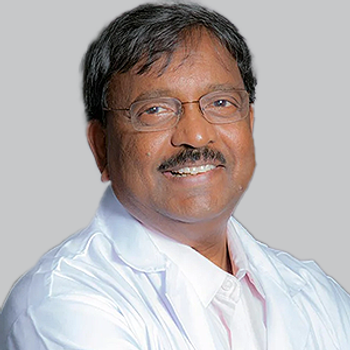
Robotic Thymectomy Safe and Effective in AChR-Myasthenia Gravis Regardless of Thymomatous Status
Following thymectomy, more than 80% of patients with myasthenia gravis showed symptom improvement, as demonstrated by changes in Myasthenia Gravis Foundation of America scores.
In a recently published study, robotic-assisted thoracoscopic surgery (RATS), a minimally invasive approach, was shown to be safe and effective to treat thymomatous and nonthymomatous patients with acetylcholine-receptor-antibody-associated myasthenia gravis (AChR-MG). Between the groups, there were no differences in remission and improvement of MG.
In total, 230 myasthenic patients including 76 patients with a thymoma (33.0%) were enrolled in the study, with a mean follow-up time of 65.7 months (±43.1). Using the Myasthenia Gravis Foundation of America (MGFA) assessment, 82.4% of patients who underwent the procedure showed any kind of improvement in MG symptoms. At the conclusion of the trial, the study investigators concluded that prospective research is needed to analyze clinical improvement and treatment strategies more specifically.
Led by Florit Marcuse, PhD, Department of Pulmonology, Maastricht University Medical Center, patient data was collected between April 2004 and December 2018. Patient characteristics revealed that thymomatous patients were more often diagnosed with mild MG than severe MG despite an equal distribution of MG severity between groups. Before thymectomy, 1.7% of all patients had no therapy, 47.4% had cholinesterase inhibitor monotherapy, and 50.9% used immunosuppressive drugs.
After the first 30 days, 8 complications in 8 patients were registered. Patients with a thymoma had significant more severe complications than nonthymomatous patients (18.4% vs 3.9%; P <.001). Also, 30 days after thymectomy, more complications were reported in patients with a thymoma, although the numbers were too small for statistical analysis.
Follow-up data was complete in 165 patients (71.7%), of which 60.6% of the patients had nonthymomatous MG and 39.4% had thymomatous MG. At follow-up, complete stable remission (CSR) and stable pharmacological remission (PR) were accomplished in 8.5% and 39.4% of the patients, respectively, with no significant differences observed regardless of thymomatous status. Of the 84 patients without CSR or PR, the majority were females (74.7%), diagnosed with MSG less than 24 months before thymectomy (69.9%), without a diagnosis thymoma (61.4%), and without the use of immunosuppressive drugs upfront surgery (51.8%).
Among those who experienced no CSR or PR remission of MG during follow-up, immunosuppressive drugs were used in 47.6% before thymectomy. In patients who accomplished PR, the use of immunosuppressive drugs was lower, but not significant, compared with patients who accomplished no PR. Investigators observed no significant difference in time of follow-up between patients who accomplished CSR or PR (mean, 69.7 [±42.5] months), compared with patients who experienced no CSR or PR (mean, 63.6 [±43.6] months).
READ MORE:
After 5 years of follow-up, 63.3% of the nonthymomatous patients and 93.1% of the thymomatous patients were using immunosuppressive drugs. Prior to thymectomy, 44.0% of patients were using prednisone. Five years after thymectomy, this proportion decreased to 28.6%. While the used of combined therapy with prednisone and azathioprine decreased over time in the nonthymomatous group (31.0% vs 8.2% five years after), those with a thymoma showed a trend with light increase in the use of prednisone (47.8% before thymectomy vs 55.2% five years after thymectomy).
As for the reasons for prednisone decrease, investigators wrote that "It is unclear if this decrease is the effect of the thymectomy itself, the natural course of the disease, or a combination of both. The national guideline recommends to taper prednisone and switch to steroid sparing therapy, which could affect the prescription and use of prednisone as well."
In response to the increase in the use of immunosuppressive drugs at follow-up in thymomatous patients, Marcuse et al wrote, "Although most thymomatous patients should have years of oncological follow-up, the number of patients in our follow-up decreased drastically over the years. It is possible that patients were seen by the oncologist without need of neurological follow-up, suggesting that the thymomatous patients in our group were harder to treat, leading to a possible bias.
REFERENCE
1. Marcuse F, Hoejimakers JG, Hochstenbag M, et al. Outcomes after robotic thymectomy in nonthymomatous versus thymomatous patients with acetylcholine-receptor-antibody-associated myasthenia gravis. Neuromusc Disord. 2023;33(5):417-424. doi:10.1016/j.nmd.2023.03.005
Newsletter
Keep your finger on the pulse of neurology—subscribe to NeurologyLive for expert interviews, new data, and breakthrough treatment updates.


































